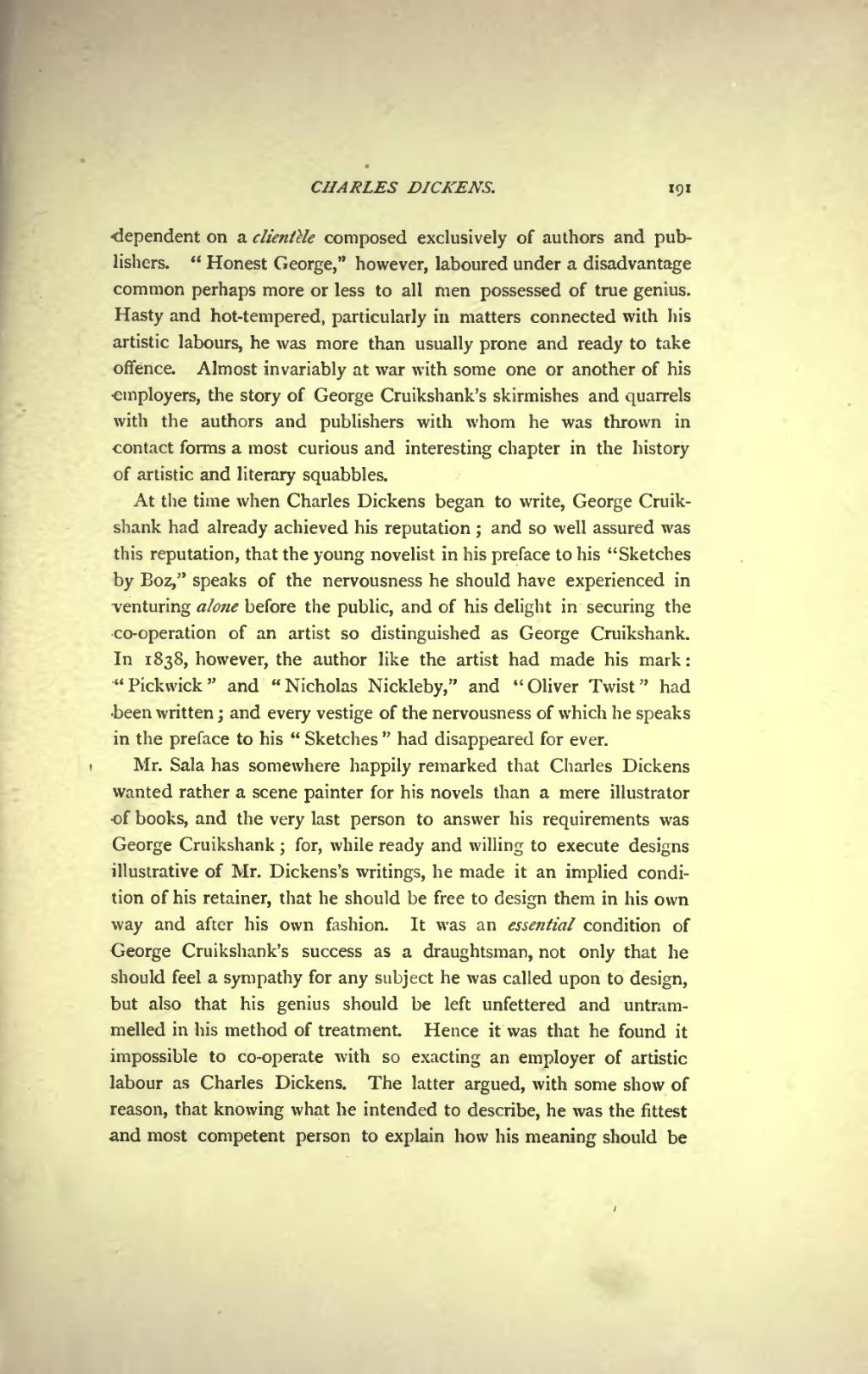dependent on a clientèle composed exclusively of authors and publishers. "Honest George," however, laboured under a disadvantage common perhaps more or less to all men possessed of true genius. Hasty and hot-tempered, particularly in matters connected with his artistic labours, he was more than usually prone and ready to take offence. Almost invariably at war with some one or another of his employers, the story of George Cruikshank's skirmishes and quarrels with the authors and publishers with whom he was thrown in contact forms a most curious and interesting chapter in the history of artistic and literary squabbles.
At the time when Charles Dickens began to write, George Cruikshank had already achieved his reputation; and so well assured was this reputation, that the young novelist in his preface to his "Sketches by Boz," speaks of the nervousness he should have experienced in venturing alone before the public, and of his delight in securing the co-operation of an artist so distinguished as George Cruikshank. In 1838, however, the author like the artist had made his mark: "Pickwick" and "Nicholas Nickleby," and "Oliver Twist" had been written; and every vestige of the nervousness of which he speaks in the preface to his "Sketches" had disappeared for ever.
Mr. Sala has somewhere happily remarked that Charles Dickens wanted rather a scene painter for his novels than a mere illustrator of books, and the very last person to answer his requirements was George Cruikshank; for, while ready and willing to execute designs illustrative of Mr. Dickens's writings, he made it an implied condition of his retainer, that he should be free to design them in his own way and after his own fashion. It was an essential condition of George Cruikshank's success as a draughtsman, not only that he should feel a sympathy for any subject he was called upon to design, but also that his genius should be left unfettered and untrammelled in his method of treatment. Hence it was that he found it impossible to co-operate with so exacting an employer of artistic labour as Charles Dickens. The latter argued, with some show of reason, that knowing what he intended to describe, he was the fittest and most competent person to explain how his meaning should be
